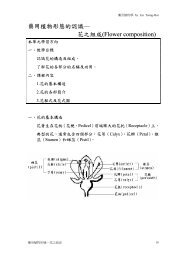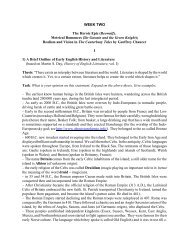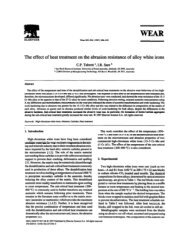Ecology and Farming
Ecology and Farming
Ecology and Farming
Create successful ePaper yourself
Turn your PDF publications into a flip-book with our unique Google optimized e-Paper software.
heating or cooling; <strong>and</strong> natural, cost effective<br />
ventilation systems. An innovative suggestion for<br />
research is an analysis of the agro-ecological impacts<br />
of clean in place (CIP) soaps, acids, <strong>and</strong> sanitizers<br />
used in milk houses that are added to manure, then<br />
applied to fields.<br />
Three respondents cited a need to analyze the<br />
nutritional <strong>and</strong> health benefits of pastured poultry.<br />
Three others suggested a study of alternative<br />
processing <strong>and</strong> cooling for poultry, including on-<br />
farm, outdoor, <strong>and</strong> mobile units. Others stated the<br />
need for a nationwide inventory of organic poultry<br />
processing facilities.<br />
For organic dairy research, three respondents<br />
suggested studies to re-design milk houses to fit<br />
grazing systems <strong>and</strong> micro-dairy enterprises. Others<br />
suggested evaluation of nurse-cow rearing as an<br />
alternative enterprise; research into pasture species<br />
mixtures that improve animal productivity <strong>and</strong><br />
extend the grazing season; alternative feed sources<br />
(high energy feeds, molasses, distillers grains,<br />
sunflower seeds, <strong>and</strong>/or hulls); <strong>and</strong> herbs <strong>and</strong> other<br />
plants to grow to optimize cattle health in pastures<br />
<strong>and</strong> hedge rows. Others encouraged an analysis of<br />
various breeds that best fit organic dairy production<br />
<strong>and</strong> a study for conjugated linoleic acid (CLA) <strong>and</strong><br />
omega-3 fatty acids in organic dairy products.<br />
Concerning beef production, four respondents<br />
suggested a need to study breed <strong>and</strong> line selection<br />
for organic beef operations, i.e. which breeds<br />
perform best in organic systems? Others mentioned<br />
the need to research E. coli H7-0157 prevention in<br />
organic grass-fed animals <strong>and</strong> organic animals fed<br />
a combination of grass <strong>and</strong> grain. One commentor<br />
suggested a study on how organic meat processing<br />
can best simultaneously satisfy USDA meat<br />
inspectors <strong>and</strong> be compliant with NOP st<strong>and</strong>ards.<br />
An innovative commentor encouraged research on<br />
feeding kelp for pinkeye control. Others suggested<br />
the need for research on conventional vs. organic<br />
carcasses to analyze chemical <strong>and</strong> antibiotic residues<br />
<strong>and</strong> to analyze for CLA <strong>and</strong> omega-3 fatty acids in<br />
pastured organic beef.<br />
Four commentors mentioned the need for research<br />
on organic best management practices <strong>and</strong> feed<br />
conversion ratios for pastured hog operations. Four<br />
suggested studies of breed selection for organic<br />
hog operations, i.e. which breeds perform the best<br />
in organic systems in terms of foraging, health,<br />
reproduction, profitability, <strong>and</strong> meat quality.<br />
In the category“Sheep <strong>and</strong> Goats,” four respondents<br />
suggested research on management strategies<br />
<strong>and</strong> approved parasiticides for sheep <strong>and</strong> goats.<br />
Three encouraged analysis of multi-species<br />
grazing systems, combining sheep/goats with<br />
24 Special Feature: Animals in Organic Production <strong>Ecology</strong> & <strong>Farming</strong> | SEptEmbEr - DEcEmbEr 2006










